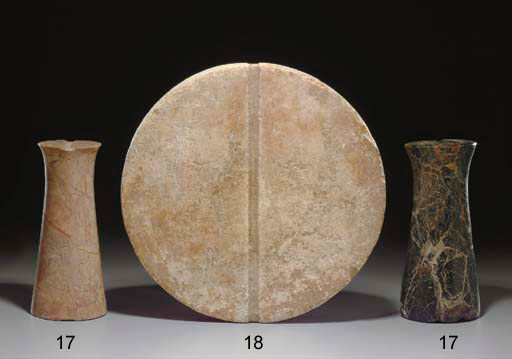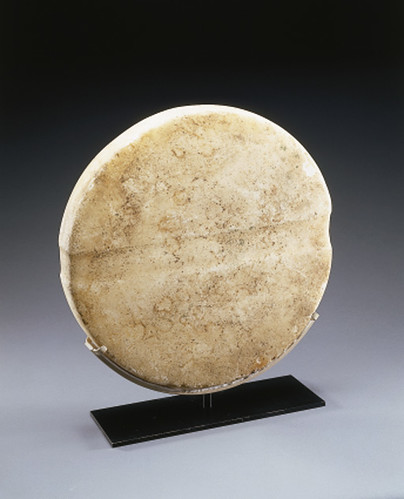Sotheby’s auction house recently had a sale of miscellaneous antiquities, including a 14″ stone disk dated to 2200-1700 BC from the “Bactrian/Margian Region.” This is the so-called “BMAC” (Bactria-Margiana Archeological Complex), centered around Merv in present-day Turkmenistan, which was first described by Soviet archeologists in the 1970’s. I don’t know enough about it, but this disk — how did it end up at Sotheby’s? — is apparently not the only example of its kind.
Christie’s sold a similar piece five years ago:

This disk is 2″ larger in diameter than the Sotheby’s example. The pestles (or pedestals?) flanking it, #17, are described as ‘ritual objects.’ I have no idea what ritual purpose they could serve, though, and the auction house catalog descriptions don’t shed much light. The Christie’s disk and ‘ritual objects’ sold for $7,200 which presumably was the basis for Sotheby’s estimate of $5,000 – $8,000 for their disk; it ended up selling for $5,313.
A quick search yields more examples. They all seem to have a characteristic slot or groove through the center.
(photos by greyherbert)





Hello,
I’ve been interested in these objects for some time. Thet are found in ancient graves in Afghanistan and Pakistan. Victor Sarianidi, the Russian archaeologist who found the “Gold of Bactria”, thinks they were part of a Haoma ritual , the drug central to proto-Zoroastrian religion; this idea is not accepted by every archaeologist. Aren’t they interesting?
all the best, Peter Linenthal